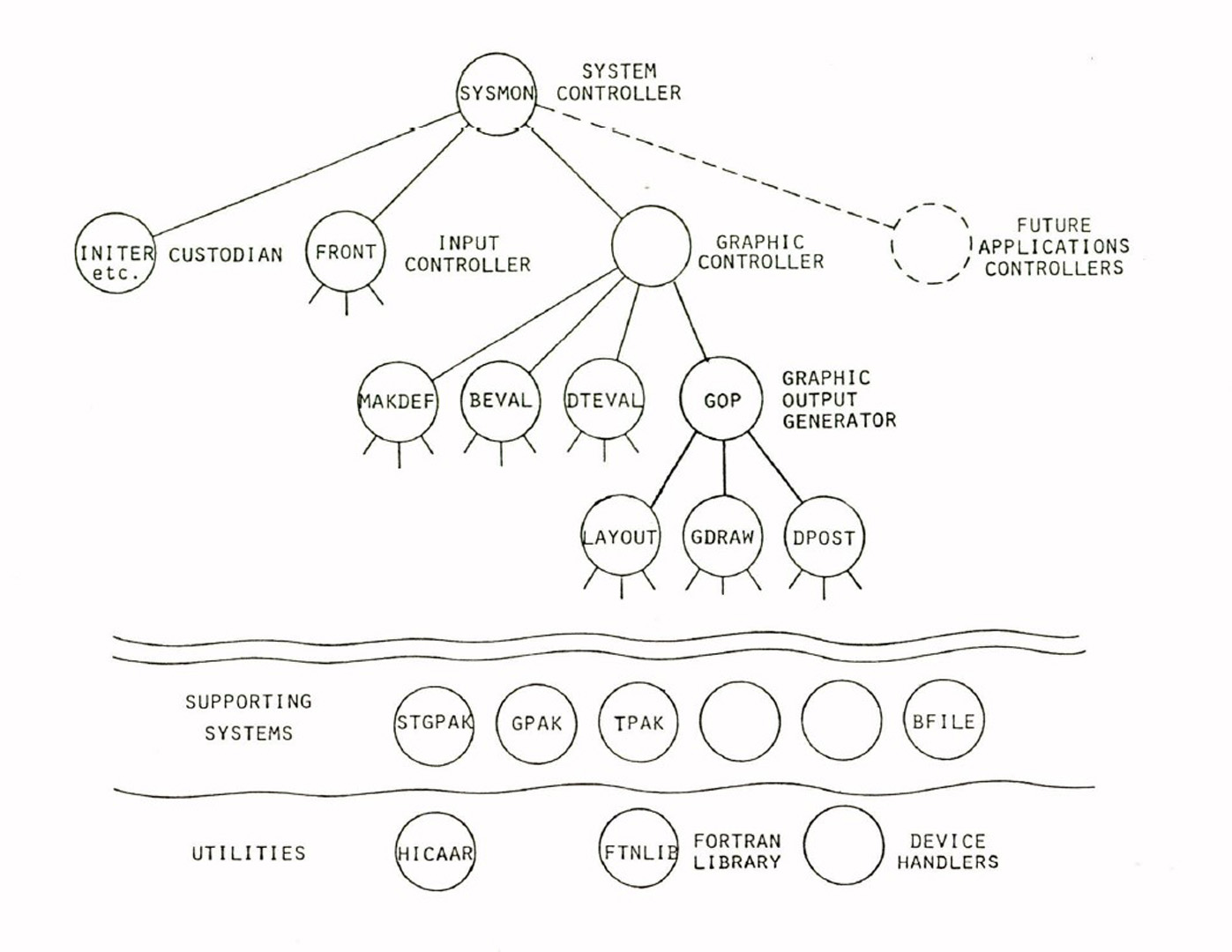“The PADL-1.0/2 system for defining and displaying solid objects” by Voelcker, Requicha, Hartquist, Fisher, Metzger, et al. …
Conference:
Type(s):
Title:
- The PADL-1.0/2 system for defining and displaying solid objects
Presenter(s)/Author(s):
Abstract:
PADL (Part and Assembly Description Language) is a language for defining solid objects via constructive solid geometry, i.e. as (regularized) set-theoretical compositions of primitive solid “building blocks”. The current processor for Version 1.0 of the language accepts PADL statements either in batch or in keyboard-interactive mode and produces line drawings of objects on CRT’s and plotting devices. A variety of drawing styles is available: dimensioned orthographics, perspectives, section views, interference drawings, etc. Novel characteristics of the PADL-1.0/2 system include 1) general combinational operators that may be applied to any part defined in PADL, 2) correct handling of “pathologies” that occur when (for example) two objects have partially coincident boundaries, 3) maintenance of consistent multiple representations of the same object, and 4) automatic posting on drawings of dimensions to reflect user-defined geometric relations between features of objects. This paper provides an overview of both the language and the current processor’s capabilities and organization. Detailed discussions of the underlying mathematics, algorithms, and implementation are presented elsewhere.
References:
1. A. A. G. Requicha and H. B. Voelcker, “Constructive solid geometry”, Tech. Memo. No. 25, Production Automation Project, Univ. of Rochester, November 1977.
2. W. B. Fisher, A. A. G. Requicha, N. M. Samuel, and H. B. Voelcker, “Part and assembly description languages II: Definitional facilities in PADL-1.n and command facilities in the PADL-1.0/2 processor” Tech. Memo. No. 20b, Production Automation Project, Univ. of Rochester, 1978.
3. W. B. Fisher, E. E. Hartquist, A. A. G. Requicha, and H. B. Voelcker, “The PADL-1.0/n processor: Overview & system documentation”, System Doc. No. 01, Production Automation Project, Univ. of Rochester, October 1977.
4. H. B. Voelcker and A. A. G. Requicha, “Geometric modelling of mechanical parts and processes”, COMPUTER, Vol. 10, No. 12, December 1977; also published as Tech. Memo. No. 23, Production Automation Project, Univ. of Rochester, October 1977.
5. H. B. Voelcker and A. A. G. Requicha, “Boundary evaluation procedures for objects defined via constructive solid geometry”, Tech. Memo. No. 26, Production Automation Project, Univ. of Rochester, 1978.
6. A. A. G. Requicha and R. B. Tilove, “Mathematical foundations of constructive solid geometry: General topology of closed regular sets”, Tech. Memo. No. 27, Production Automation Project, Univ. of Rochester, March 1978.
7. A. A. G. Requicha, “Mathematical models of rigid solid objects”, Tech. Memo. No. 28, Production Automation Project, Univ. of Rochester, November 1977.
8. A. A. G. Requicha, “Representations of rigid solid objects”, Tech. Memo. No. 29, Production Automation Project, Univ. of Rochester, 1978.
9. R. B. Tilove, “A study of geometric set-membership classification”, Tech. Memo. No. 30, Production Automation Project, Univ. of Rochester, November 1977.
10. “Dimensioning & Tolerancing”, ANSI Standard Y14.5-1973, Amer. Soc. of Mech. Engineers, New York, 1973.
11. H. B. Peirce and H. B. Voelcker, “Dissemination of the PADL-1.0/n processor”, PADL Admin. Doc. No. 01, Production Automation Project, Univ. of Rochester, October 1977.




